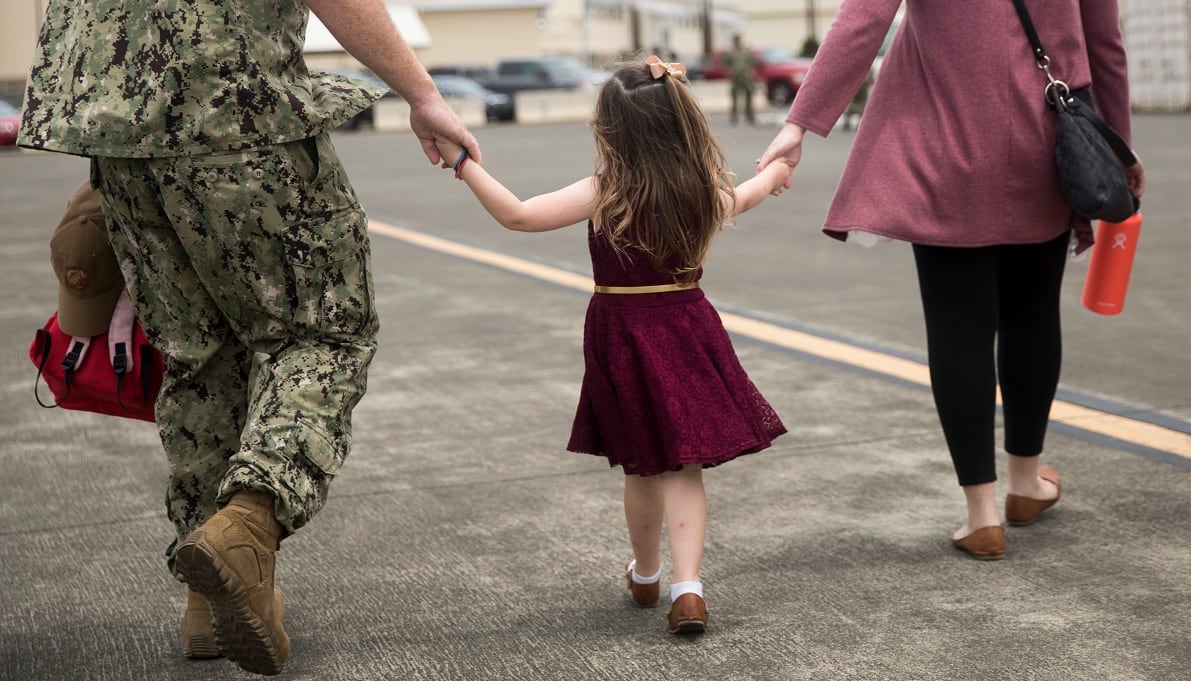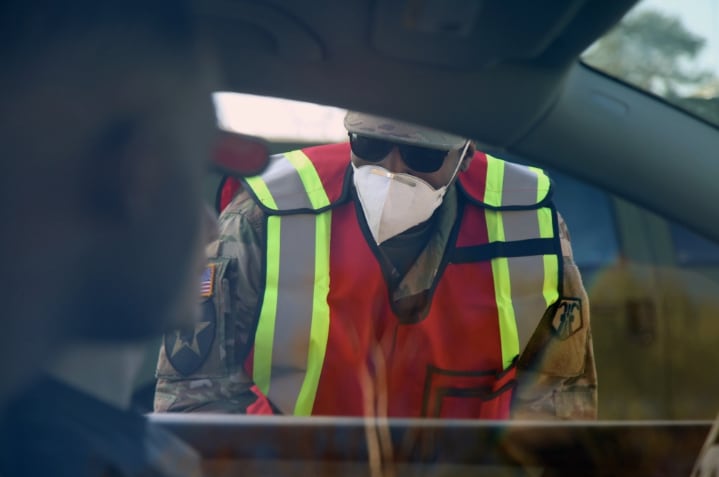With the services on track to report more than 1,000 cases of COVID-19 by the end of the week, military senior leadership is looking at a tough choice.
They can ramp down some missions in an attempt to stem the spread of coronavirus throughout the ranks and sacrifice both short- and long-term readiness.
Or, they can push ahead knowing that it could take longer for the infection rate to peter out ― and possibly cost more lives ― but having preserved national security to the fullest extent possible.
Those questions are part of the ongoing discussions at the highest levels of the Defense Department, Pentagon spokesman Jonathan Hoffman told Military Times on Friday.
“[There] seems to be this belief that the best way for the Department of Defense to defeat COVID-19 is for us to stand down and stop operations around the world,” Hoffman said. “One, that’s not going to happen. Two, we don’t believe that’s necessary.”
The services have scaled back on some operations, including large international exercises like Defender 2020 Operation African Lion, as well as temporarily freezing boot camp for the Navy and Marine Corps.
U.S. Forces Korea has been held up as the example for slowing the infection rate, after its commander, Army Gen. Robert Abrams, put in strong social distancing restrictions early on, including screenings of all personnel coming onto installations.
But those policies did not stop operations altogether, Hoffman said.
“Even in U.S. Forces Korea, one of the first places that were hit…they were still flying sorties, they were still doing maneuver, they were at the rifle range ― they were still doing training,” he said.
Defense Secretary Mark Esper put out progressive travel restriction throughout March, starting with non-essential international and domestic permanent change-of-station and temporary travel, working up to a stop-movement order last week that put holds on most deployments, in an attempt to slow the spread.
RELATED

And down at the unit level, Esper released guidance about social distancing and teleworking, in an effort to separate service members where possible ― with the understanding that submarines, aircraft and other tight quarters are unavoidable.
But as the infection rate continues to grow, troops at the ground level have sounded the alarm, that their chains of command aren’t doing every thing they can to prevent the spread, instead maintaining both the status quo and their focus on performance metrics.
At least one Army basic training post has screening procedures for incoming recruits that are incomplete, focusing on New York City and New Orleans as hot spots, despite confirmed cases of COVID-19 in all 50 states, including hot spots in Washington state and California, as well as emerging crises in Chicago and Florida.
“In the past 14 days have you traveled through LaGuardia, [John F. Kennedy], or Newark airports?” reads a question on one reception battalion’s intake instructions, homing in on anyone who has been in the New York City area.
Leadership is “scrambling to do the bare minimum while keeping the training going,” according to a drill sergeant who spoke to Military Times on the condition of anonymity. “We’ve cut lots of events that involve touching (combatives) and we are social distancing but that’s it.”
Hands-on combat lifesaving training has also been cut back, he added.
“They’ve stripped what they could so it briefs well that we are still making mission,” he said.
That compromise is part of a larger calculus, Hoffman said.
“If we stop training completely, that throughput is gone, and you don’t get that back,” he said. “You either have to scale up your training in the future to make up for that, or you just never get it back.”
Senior leadership has been leaning on commanders to follow Esper’s guidance and make the best decisions for their units, with the caveat that they can’t babysit everyone.
“We expect people to go ahead and execute the orders ... provided by the Pentagon to keep people safe,” Senior Enlisted Adviser to the Chief Ramon Colon-Lopez told Military Times. “Are we going to be out there, double-checking everything that our commanders are doing in the field? Absolutely not.”
‘Expendable’
Despite their best efforts to get through to lower-level leadership, story after story from troops shows that it’s business as usual in many formations.
“From my perspective, our low morale and lack of faith and trust in our chain of command comes from their seemingly blatant refusal to implement common sense controls/changes in order to prevent the spread of the virus, and by doing so, putting lives in danger unnecessarily and burdening our increasingly fragile healthcare system even further,” a San Diego-based Marine wrote to Military Times.
This is in stark contrast to the Navy, he said, which has relaxed grooming standards and suspended fitness testing to encourage sailors to leave home as little as possible.
“It is frustrating and, to be honest, quite infuriating to see Marines PT in large groups still, have to take part in large accountability formations, and attend large meetings to this day (especially when a simple email would suffice),” he said.
And, he added, there is a particular reluctance to let go of cherished traditions in service of the greater good.
“What’s even more infuriating is commands still wanting to conduct large ceremonies, such as retirements and change of command ceremonies. It is a shame that Marines that served honorably for several decades do not get the chance to have their service recognized by their peers but we are living in an age where loved ones can’t even say goodbye to their family members in person because they know what’s at stake,” he said. “Through this lens, I think any sane and reasonable person would agree a such a large gathering of people seems like a superfluous reason to put lives in danger.”
RELATED

Service members know implicitly that their jobs require a level of risk to life and limb, he added, but they accept that risk with the understanding that their leaders will do everything possible to protect them.
“I know what I signed up for: I know my life is expendable. I know that I’m supposed to make sacrifices in order to defend our beloved country. But I continue to see this negligence daily and it makes me feel like a crazy person — do my officers/senior enlisted leaders appointed over me see this and are perfectly okay with it?” he said. “Or even worse, do they think it is perfectly fine to continue to plan large meetings, PT sessions, formations, and ceremonies? What can be implied by military leadership that refuses to take action and implement common sense measures?”
While that message may not be getting to the unit level, Hoffman stressed that the Pentagon’s top leadership is doing their due diligence finding a balance between national security and the health of the force.
“We’ve been working up a risk ladder since day one on this, in trying to identify how risky certain activities are given the spread of the virus,” he said. “Balancing that with both our need to continue our national security missions as well as our need to continue these support missions.”
Having said that, Hoffman added, no one has ruled out anything.
“We’ve been very careful to say that there’s no bright lines, no things we won’t do,” he said.
Meghann Myers is the Pentagon bureau chief at Military Times. She covers operations, policy, personnel, leadership and other issues affecting service members.





